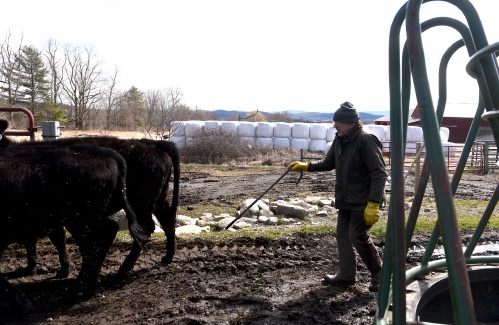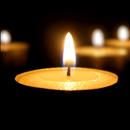
Latest News
 Alerts to crime victims in Vermont are full of flaws
Alerts to crime victims in Vermont are full of flaws

Upper Valley community nurses seek to help people stay safe at home
WHITE RIVER JUNCTION — Joan Ponzoni wasn’t feeling well when she arrived at the Bugbee Senior Center one day in January.

High egg prices drive interest in raising backyard flocks
WEST LEBANON — On Thursday, the first of a seasonal series of monthly chick delivery days at West Lebanon Feed & Supply, a cacophony of chirps greeted customers as they stopped in to pick up their orders.
Most Read
 Hartford Selectboard mulls closing road off Sykes Mountain Ave
Hartford Selectboard mulls closing road off Sykes Mountain Ave
 After a year of looking, White River Junction couple finds new home
After a year of looking, White River Junction couple finds new home
 Upper Valley beekeepers assess winter losses
Upper Valley beekeepers assess winter losses
Editors Picks
 New arts school offers alternative in downtown Lebanon
New arts school offers alternative in downtown Lebanon
 Upper Valley fire departments prepare as wildfire season lengthens
Upper Valley fire departments prepare as wildfire season lengthens
 Editorial: Jeanne Shaheen blazed a trail in politics
Editorial: Jeanne Shaheen blazed a trail in politics
 Kenyon: Dartmouth brings Trump ally into Beilock’s inner circle
Kenyon: Dartmouth brings Trump ally into Beilock’s inner circle
Sports

Men’s lacrosse: Big Green finally holding serve in Ivy League
HANOVER – Spring weekends in Hanover mean an influx of late-model luxury vehicles rolling into the Scully-Fahey Field parking lot, their occupants headed to watch the Dartmouth College men’s lacrosse team tilt at the collective windmill of Ivy League opposition.
 New Hampshire lawmakers target another source of PFAS: waxes used by skiers and snowboarders
New Hampshire lawmakers target another source of PFAS: waxes used by skiers and snowboarders
 Whaleback seeks support to repair and replace ski lift
Whaleback seeks support to repair and replace ski lift
 Windsor outlasts Oxbow to win DIII hoops title
Windsor outlasts Oxbow to win DIII hoops title
Opinion

Column: Federal funding for medical research puts America first
When my grandmother was diagnosed with Alzheimer’s disease in the mid-1990s, there were few options for therapies and treatments. As her disease progressed over the next decade, there was little that could be done until she died in 2004. I was still in elementary school when she faced this disease, which has unfortunately left me with few memories of her where she was not ill or bed-ridden.
 Editorial: MLB resumes all-American pursuit of new billions
Editorial: MLB resumes all-American pursuit of new billions
 Editorial: NH police put mission aside to pursue immigrants
Editorial: NH police put mission aside to pursue immigrants
 Column: Lebanon trades one annoyance for another
Column: Lebanon trades one annoyance for another
 Editorial: If politicians want respect they’d better earn it
Editorial: If politicians want respect they’d better earn it

Your Daily Puzzles

An approachable redesign to a classic. Explore our "hints."

A quick daily flip. Finally, someone cracked the code on digital jigsaw puzzles.

Chess but with chaos: Every day is a unique, wacky board.

Word search but as a strategy game. Clearing the board feels really good.

Align the letters in just the right way to spell a word. And then more words.
Photos

Burning passion
Martin Pastor splits wood before bringing it into his home in Hanover on Thursday. Pastor burns about six cords of wood per winter, using his fireplace and wood stove. Pastor often cooks over the fireplace, saying, “Since I was a Boy Scout, it is something I like to do.” He enjoys cooking venison after having good luck during hunting season.
 Time for a change
Time for a change
 Cat walk
Cat walk
 Blowing the blaze
Blowing the blaze
 Perfecting her pitch
Perfecting her pitch
Arts & Life

Upper Valley beekeepers assess winter losses
WINDSOR — Last year, beekeeper Brian Jasinski reached a new milestone in his business by surpassing 300 colonies of honeybees. He hoped hitting that mark would allow him to sell new products this spring.
 Art Notes: ‘If you love ‘Messiah,’ you’ll love this piece’
Art Notes: ‘If you love ‘Messiah,’ you’ll love this piece’
 Farmer-led project gets grant to recycle agricultural plastics
Farmer-led project gets grant to recycle agricultural plastics
 Art Notes: We the People’s latest show offers hopeful message
Art Notes: We the People’s latest show offers hopeful message
 Halls Lake in Newbury earns Gold Lake Wise Award
Halls Lake in Newbury earns Gold Lake Wise Award
Obituaries
 Judy Hill
Judy Hill
Windsor, VT - Judy L. Hill, age 66, passed Sunday, March 16, 2025. A graveside service will be held in Child's Cemetery in Cornish, NH on April 12, 2025, at 1pm. A celebration of her life will follow in the Cornish Town Hall. ... remainder of obit for Judy Hill
 Marilyn M. Gates
Marilyn M. Gates
White River Junction, VT - Marilyn M. Gates, 93, passed away peacefully on Saturday, March 29, 2025, at Cedar Hill Health Care Center in Windsor, VT. She was born on July 2, 1931, in Hanover, NH to Percy N. and Louise (Roberts) Courtema... remainder of obit for Marilyn M. Gates
 Deborah Anne Garretson
Deborah Anne Garretson
West Lebanon, NH - Deborah Anne Garretson died quietly on March 2, 2025, at the Jack Byrne Center for Palliative & Hospice Care of complications of stage 4 lung cancer. She had just celebrated her 80th birthday. She was held lovingly by... remainder of obit for Deborah Anne Garretson
 Gordon E. Bagley Jr.
Gordon E. Bagley Jr.
Lebanon, NH - Gordon E. Bagley, Jr., 86, peacefully passed away at home on Thursday, March 27, 2025, with his loving family by his side. Gordon was born in Lebanon on January 30, 1939, son of Gordon and Marie (Sanville) Bagley. He grad... remainder of obit for Gordon E. Bagley Jr.

 Editorial: Time is running out for American democracy
Editorial: Time is running out for American democracy
 Local group expected to acquire Burke Mountain ski resort
Local group expected to acquire Burke Mountain ski resort
 No bet limits and slot machines possible changes to New Hampshire’s casinos
No bet limits and slot machines possible changes to New Hampshire’s casinos

 Girls hockey: Hanover dominates Oyster River-Portsmouth, repeats at state champ
Girls hockey: Hanover dominates Oyster River-Portsmouth, repeats at state champ
